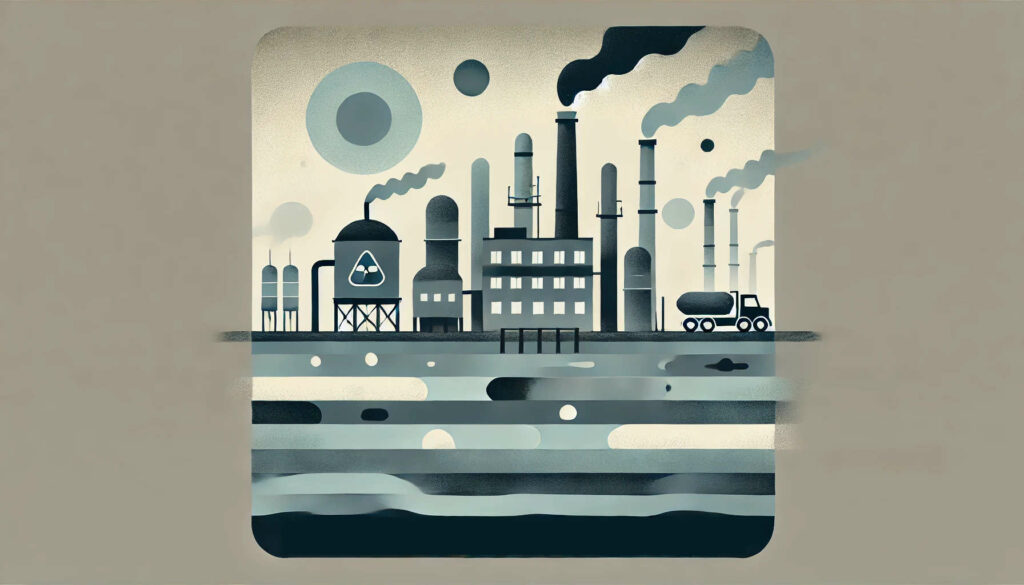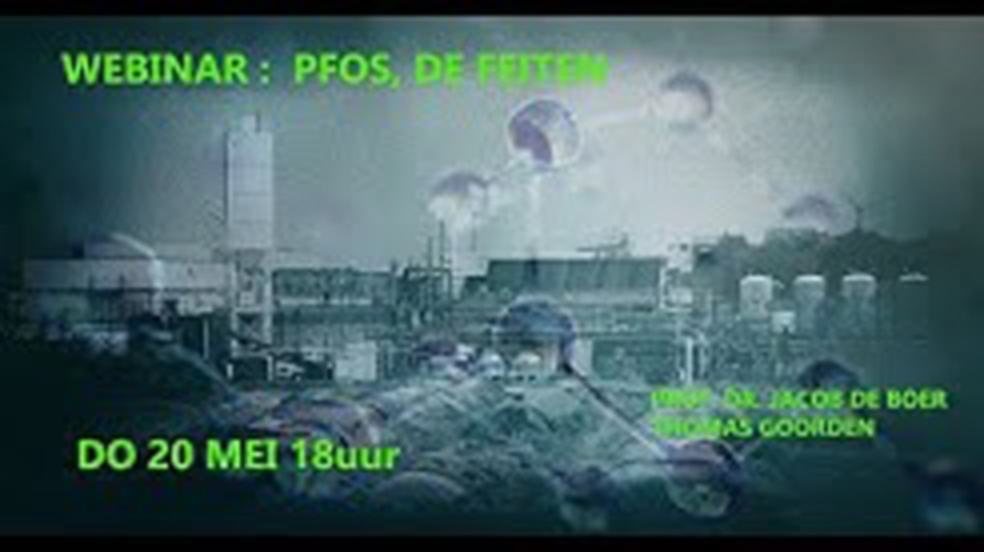PFAS
19.02.2025 : Grondrecht
De focus bij de PFAS-vervuiling rond de Chemours-fabriek in Dordrecht ligt vaak op PFOA en GenX, maar recent onderzoek wijst uit dat er nog meer schadelijke PFAS-verbindingen in het oppervlaktewater aanwezig zijn. Milieuchemicus Chiel Jonker van de Universiteit Utrecht ontdekte zes extra PFAS-soorten in concentraties die hoger zijn dan op basis van lozingen via het oppervlaktewater mag worden verwacht. Twee van deze stoffen, PFNA en PFDA, zijn volgens hem zelfs tien keer giftiger dan PFOA.
Jonker baseert zijn bevindingen op metingen van de waterschappen Rivierenland en Hollandse Delta in wateren rond Dordrecht en de Alblasserwaard. Zoals verwacht zijn de concentraties PFOA en GenX hoog, aangezien Chemours tot 2012 via de lucht grote hoeveelheden PFOA uitstootte en vervolgens overstapte op GenX. Wat opvalt, is dat naast deze stoffen nog andere PFAS-verbindingen in aanzienlijke hoeveelheden worden aangetroffen. Chemours kreeg in 2021 een vergunning voor de uitstoot van deze stoffen nadat het bedrijf had vastgesteld dat ze via de lucht vrijkwamen, zo meldt milieudienst DCMR. Jonker vermoedt echter dat deze uitstoot al veel langer plaatsvindt, gezien de hoge concentraties die nu worden gemeten.
PFAS breken nauwelijks af en blijven daardoor langdurig aanwezig in het milieu. Hoewel de toegestane lozingshoeveelheden door de jaren heen drastisch zijn verlaagd – van tonnen per jaar naar enkele kilogrammen – blijft de impact op mens en natuur groot. De schadelijke effecten van PFAS op de gezondheid zijn al langer bekend. Ze kunnen het immuunsysteem verzwakken en worden in verband gebracht met verschillende ziekten, waaronder kanker. Recent heeft de Wereldgezondheidsorganisatie (WHO) PFOA officieel geclassificeerd als een kankerverwekkende stof in klasse 1, de hoogste risicocategorie. Dit betekent dat er overtuigend wetenschappelijk bewijs is dat PFOA kanker veroorzaakt bij mensen.
Volgens Jonker zijn de zes nieuw aangetroffen PFAS-verbindingen zeer waarschijnlijk afkomstig van Chemours, al kan hij dit niet met absolute zekerheid vaststellen. De afgelopen jaren zijn analysetechnieken voor PFAS sterk verbeterd, waardoor nu ook stoffen kunnen worden gedetecteerd die voorheen onder de radar bleven. De nieuwste vergunning die Chemours eerder deze maand deels in werking zag treden, verplicht het bedrijf om onderzoek te doen naar nieuwe meetmethoden voor PFAS en deze toe te passen op de eigen uitstoot.
Uit het onderzoek van Jonker blijkt verder dat niet alleen de omgeving van Dordrecht met verhoogde PFAS-concentraties kampt. In heel Nederland zijn zeker 170 locaties geïdentificeerd waar het gehalte aan PFAS in het oppervlaktewater onverwacht hoog is. Lang niet al deze vervuiling is toe te schrijven aan Chemours. Het bedrijf zelf stelt dat het een van de weinige ondernemingen is die zich actief inspant om lozingen en emissies te minimaliseren en wijst erop dat PFAS uit tal van bronnen kunnen komen, zowel binnen als buiten Nederland.
De bevindingen roepen zorgen op bij lokale overheden. Dordts milieuwethouder Tanja de Jonge (GroenLinks) benadrukt het belang van inzicht in de bronnen en verspreiding van PFAS om vervuiling beter te kunnen bestrijden. Ze pleit voor een continu monitoringssysteem dat in kaart brengt welke stoffen worden uitgestoten en geloosd. Volgens haar zou een dergelijk systeem niet alleen helpen om milieuvervuiling in een vroeg stadium te detecteren, maar ook de handhaving van milieuregels door toezichthouders vergemakkelijken.
Het onderzoek van de Universiteit Utrecht wordt in 2025 voortgezet in samenwerking met Rijkswaterstaat, de waterschappen en omgevingsdiensten. Het doel is om met actuelere data de verspreiding van PFAS beter in kaart te brengen en verantwoordelijkheden toe te wijzen aan de juiste bedrijven. Op basis van deze inzichten kunnen maatregelen worden genomen om verdere verontreiniging te voorkomen.
Chemours ligt al langer onder vuur vanwege de uitstoot van schadelijke stoffen. Onlangs kwam aan het licht dat het bedrijf zonder vergunning tetrafluorpropaanzuur in het afvalwater loosde. Milieudienst DCMR dreigde begin februari met een dwangsom die kan oplopen tot 3,75 miljoen euro als Chemours niet binnen twee maanden stopt met deze illegale lozing.
Sinds eind vorig jaar zijn alle Nederlandse bedrijven die PFAS uitstoten verplicht om plannen te maken om hun emissies terug te dringen. De meer dan tienduizend verschillende PFAS-verbindingen – die onder andere in voedselverpakkingen, kleding, pannen en medische hulpmiddelen worden gebruikt – staan nu op de lijst van Zeer Zorgwekkende Stoffen (ZZS). Stoffen op deze lijst worden als gevaarlijk beschouwd voor mens en milieu, omdat ze kankerverwekkend kunnen zijn of schadelijk voor de voortplanting. De nieuwe onderzoeksresultaten maken eens te meer duidelijk dat strengere controle en handhaving noodzakelijk zijn om de impact van PFAS-vervuiling te beperken.
Bron:
https://www.ad.nl/dordrecht/onderzoeker-schrikt-van-onverwacht-hoge-concentraties-andere-pfas-in-water-rondom-chemours~a7d13a99/



